Foundation is one of the most important elements of a structure, the purpose of which is to transfer load from structure to the ground by acting as a connection between both.
Based on the use, soil condition, load from the structure Foundation can be classified and hence used accordingly. Before commencing any construction project, the first advised work is to identify the suitability of the foundation for that particular structure.
Types of Foundation
Shallow Foundation
This classification is based on the depth to width ratio of the foundation (that differs in the definitions of Terzaghi and Skempton with values being lesser than 1 and 2.5 respectively).
This is further categorized as:
Individual footing or Isolated footing
It is the most widely used foundation being used in building construction. This footing may be square, rectangular, or roundabout and is used when the structural load is being carried by columns and used in ordinary buildings of size up to five stories.
The rectangular shape is chosen when the foundation experiences moments due to the eccentricity of loads or due to horizontal forces.
An isolated footing is used when:
- Structural load is relatively low.
- Columns are placed openly.
- The bearing capacity of the soil is high at a shallow depth.
Combined footing
It is used when two or more columns are placed close enough so that their isolated footings overlap each other. It is of rectangular, square, or trapezoidal shape. A combined footing is made common to more than one column. These are also of different types including slab type, slab and beam type, rectangular, raft, and strap beam type. The main purpose is to provide uniform distribution of loads for the entire area of the footing.
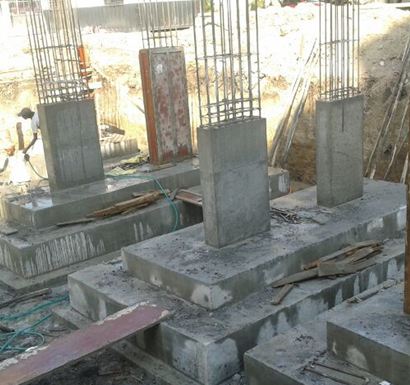
Strip footing or Wall footing
In particular, these footings have a wider base than a typical load-bearing wall foundation which spreads the weight of the building to a comparatively larger area and hence provides better stability. Strip footings act as long strip that bears the weight of a complete wall and are suitable for the buildings where the load is being taken by walls instead of isolated columns.
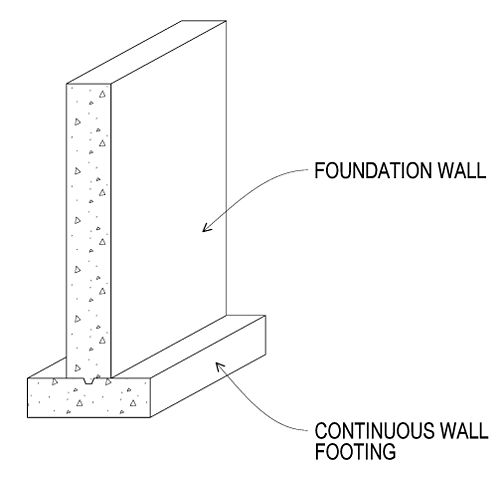
Raft or Mat Foundation
These are used where other types of shallow foundations don’t fit suitably. These are used in cases where the structural load is very high. It is being used to prevent differential settlement of individual footings and hence, designed as a single mat of all the load-bearing elements of the structure.
Raft foundation is used:
- For weaker soils and the area over which load is to be spread being large.
- Other kinds of foundations are not feasible.
- Differential settlement is to be prevented.
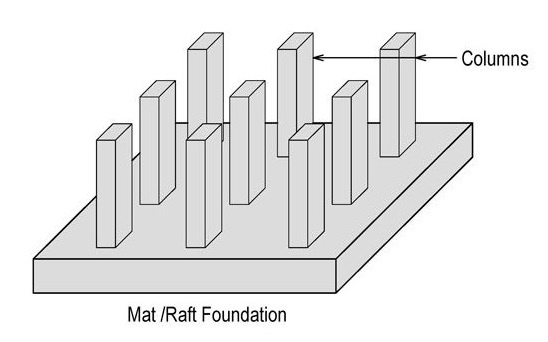
Deep Foundation
It is also classified based on the Depth to base ratio of foundation.
It is of basically two types:
Pile Foundation
Pile foundation transfers heavy loads from the structure to a hard rock stratum which is located deep down the ground level where shallow foundations cannot be used. It is mainly used to prevent uplift of the structure due to lateral loads such as earthquake and wind forces.
Pile foundation is used when:
- The areas where soil conditions near the ground surface are not suitable for heavy loads.
- The depth of hard rock strata is 5m to 50m deep from the ground surface.
It is further classified on the following basis:
Functions or use of Pile Foundation:
- Sheet piles
- Load bearing piles
- End bearing piles
- Friction piles
- Soil compactor piles
Materials or construction method:
- Timber piles
- Concrete piles
- Steel piles
- Composite piles
Drilled shafts or Caisson Foundation
Its action is similar to pile foundations but is high capacity cast-in-situ foundations. It resists the load from the structure by the mechanism of shaft resistance, toe resistance, or a combination of both.
It is used where the depth of hard strata below the ground level is located from 10m to 100m.
It is not suitable in areas where deep deposits of soft clays and loose water-bearing granular soils exist. It also doesn’t work well in areas where artesian aquifer exists.
Also Read: Machine Foundation
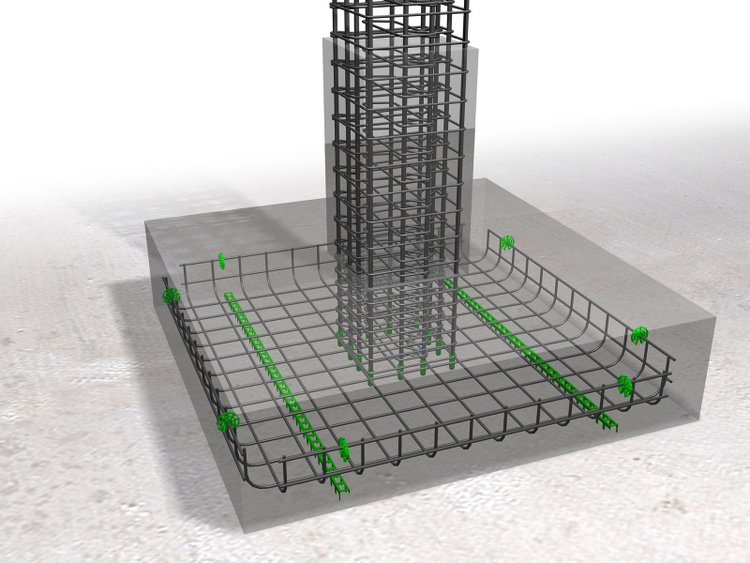
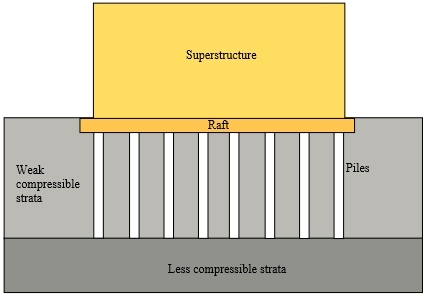


amazing article on foundations.